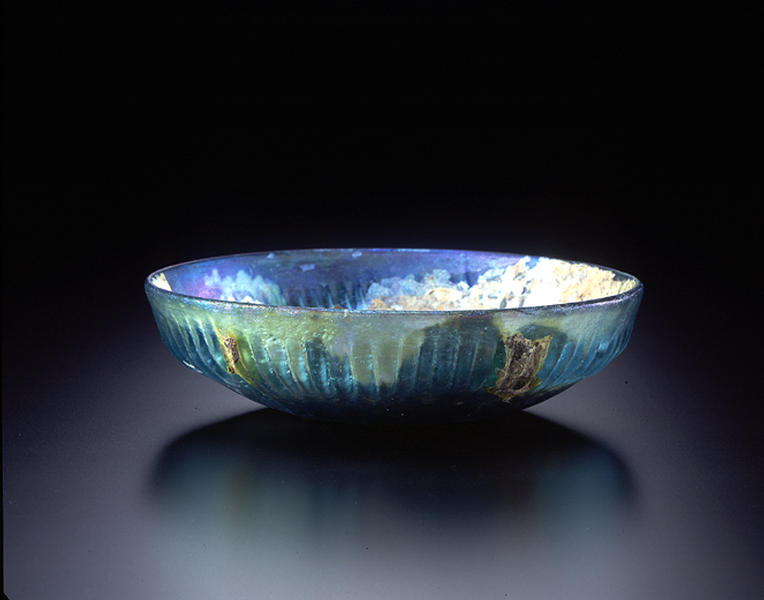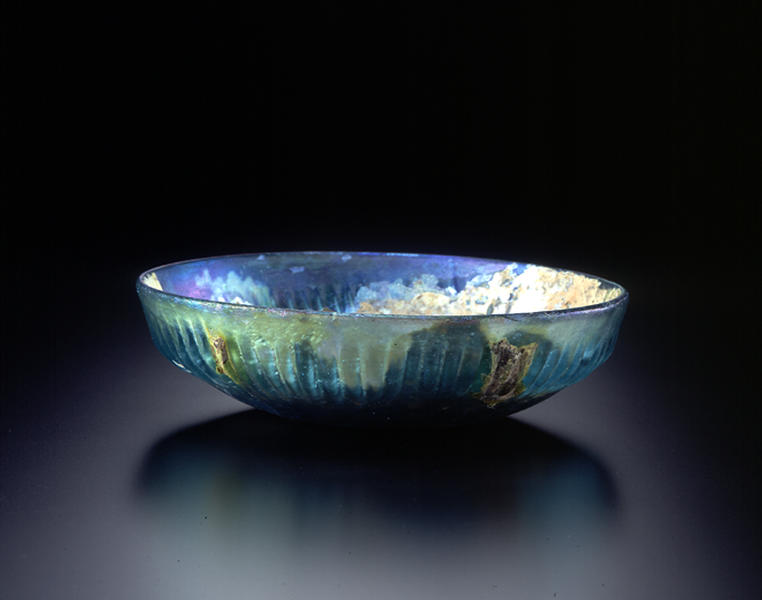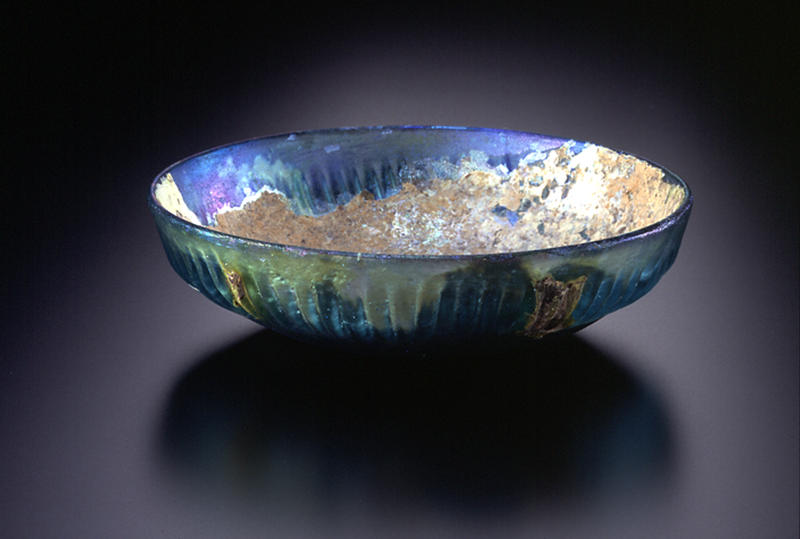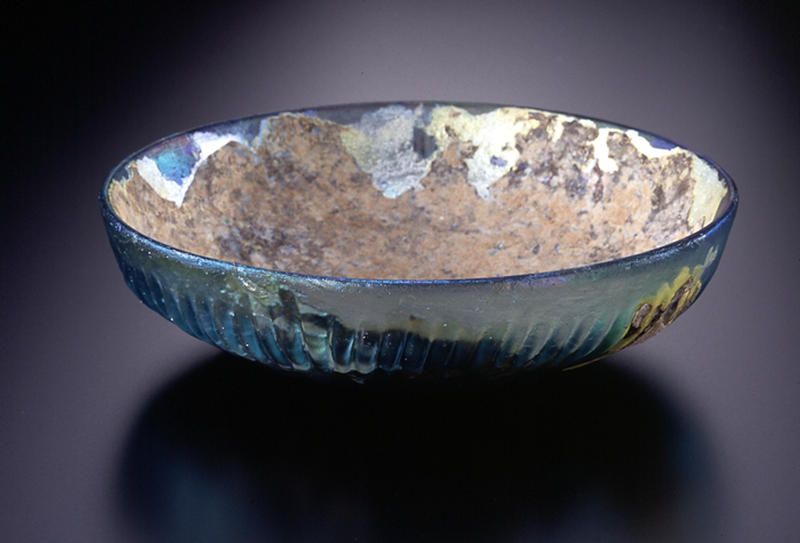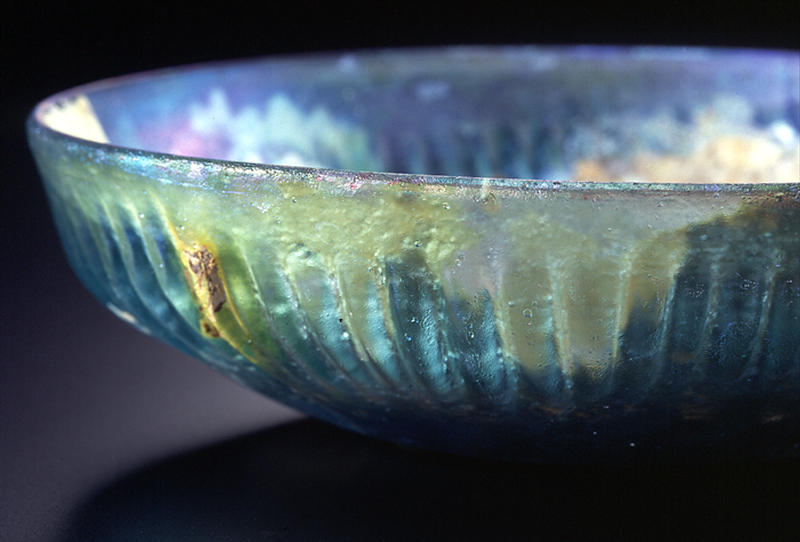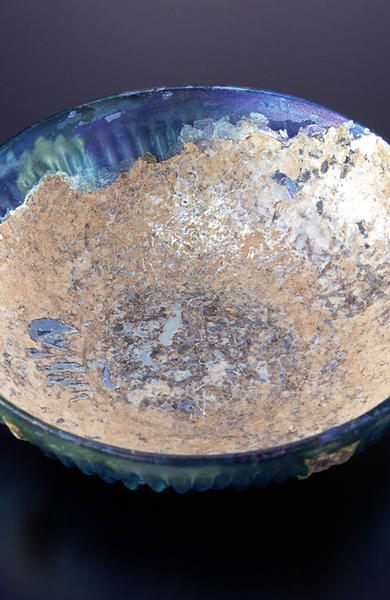Ribbed Bowl
- Eastern Mediterranean or Italy
- 1st century B.C. - 1st century A.D.
- Glass
- H-4.2 D-15
Catalogue Entry
Turquoise translucent glass. The mouth rim opens outward and the sides are almost vertical before angling to meet the base. The inner surface of the base is cut with two thin parallel lines. The outer surface has 76 ribs. Unlike other works of this type, the top edges of the ribs are smoothly fused with the vessel surface. The placement of the ribs is slightly irregular and their raised surfaces are smooth. The iridescence has chipped away from the outer surface, while the iridescence which largely covers the inner surface can be seen through the translucent glass revealed in these exposed areas.
Catalogue Entry(Bac#042)
1st century B.C.‐1st century A.D.
Glass
(a)H. 5.5 cm, Mouth dia. 12.0 cm
(b)H. 4.8 cm, Mouth dia. 14.8 cm
cH. 4.2 cm, Mouth dia. 15.0 cm
Augustan Rome subjugated the Ptolemaic dynasty of Egypt and this brought free trade and commerce to the eastern Mediterranean region. Superb glass vessels spread throughout the Roman world, and this trade enlivened the Roman glass workshops and led to distinctive developments. This type of ribbed pattern glass bowl was made in great numbers in the early Imperial Roman Italian peninsula or in the Syrian/Palestine region. These bowls were made of single color, translucent glass.
There are various explanations of how these ribs were produced, with one explanation stating that a round mold with radiating ribs was heated and pressed into a soft lump of glass. Then this mold and pressed glass lump would be placed on top of a semi-spherical mold, heated again and allowed to drape over it, the rim is finished and the bowl is complete. Another idea is that a bowl-shaped mold with ribs was formed, then glass material was put into the mold, and then an inner mold was placed on top like a lid with a heavy rock. The whole configuration was the heated and formed, the rim and other details were carved and finished to complete the bowl. Before working with blown glass, the Roman glass workshops created superb works through these casting and "sagging" techniques.
Ribbed Bowl
Ribbed Bowl
